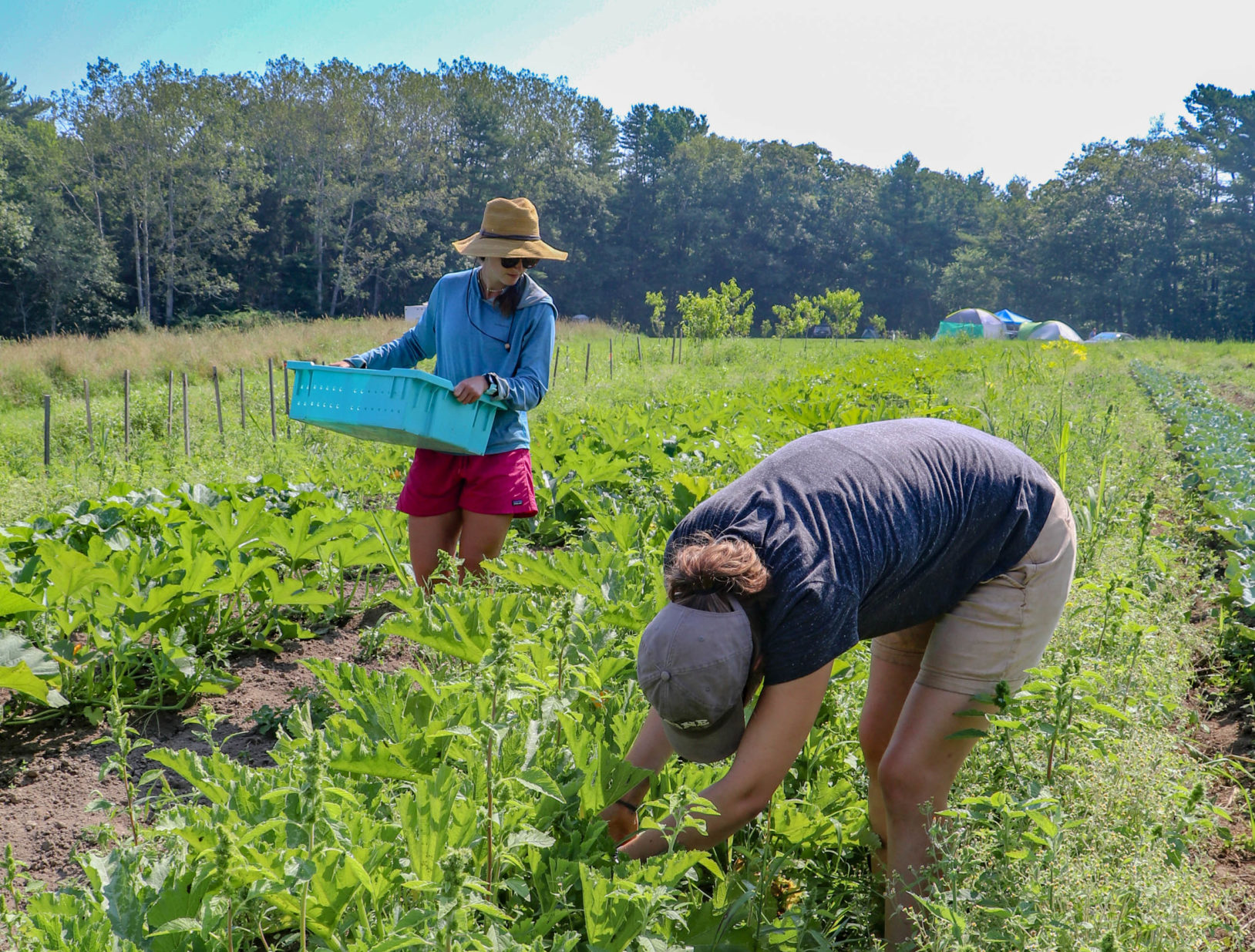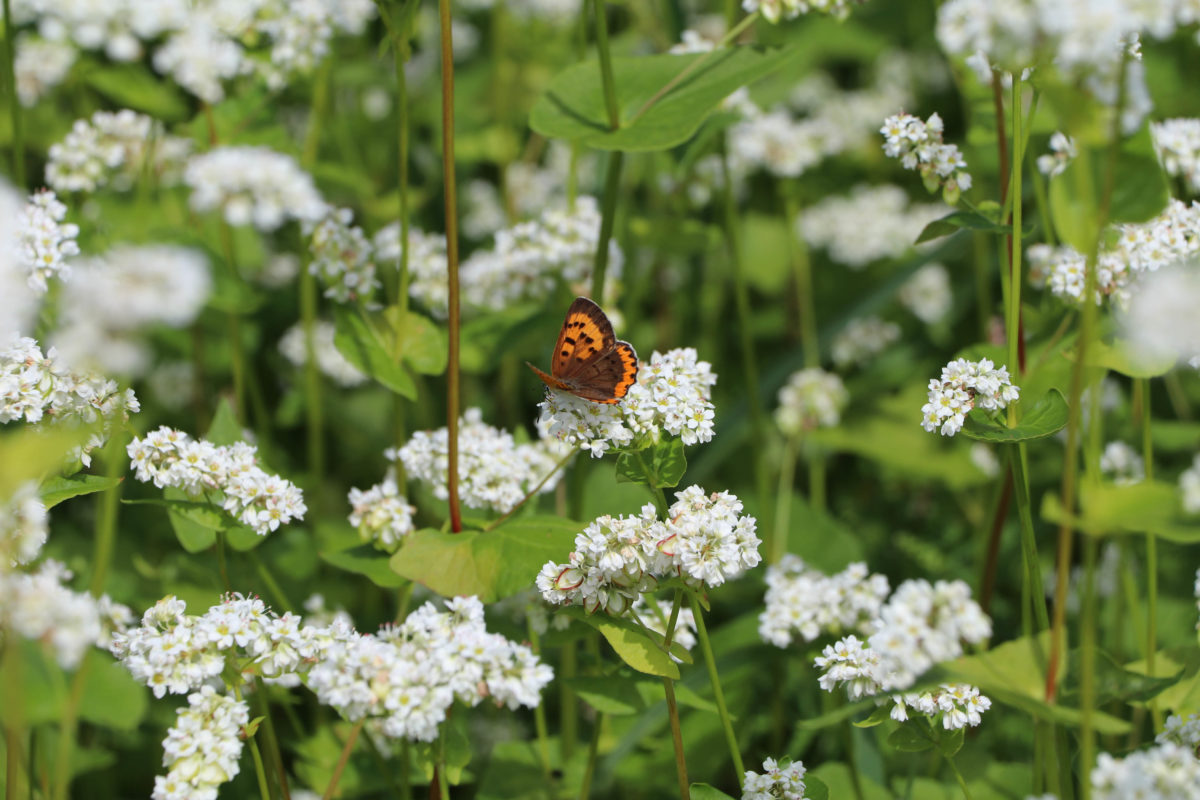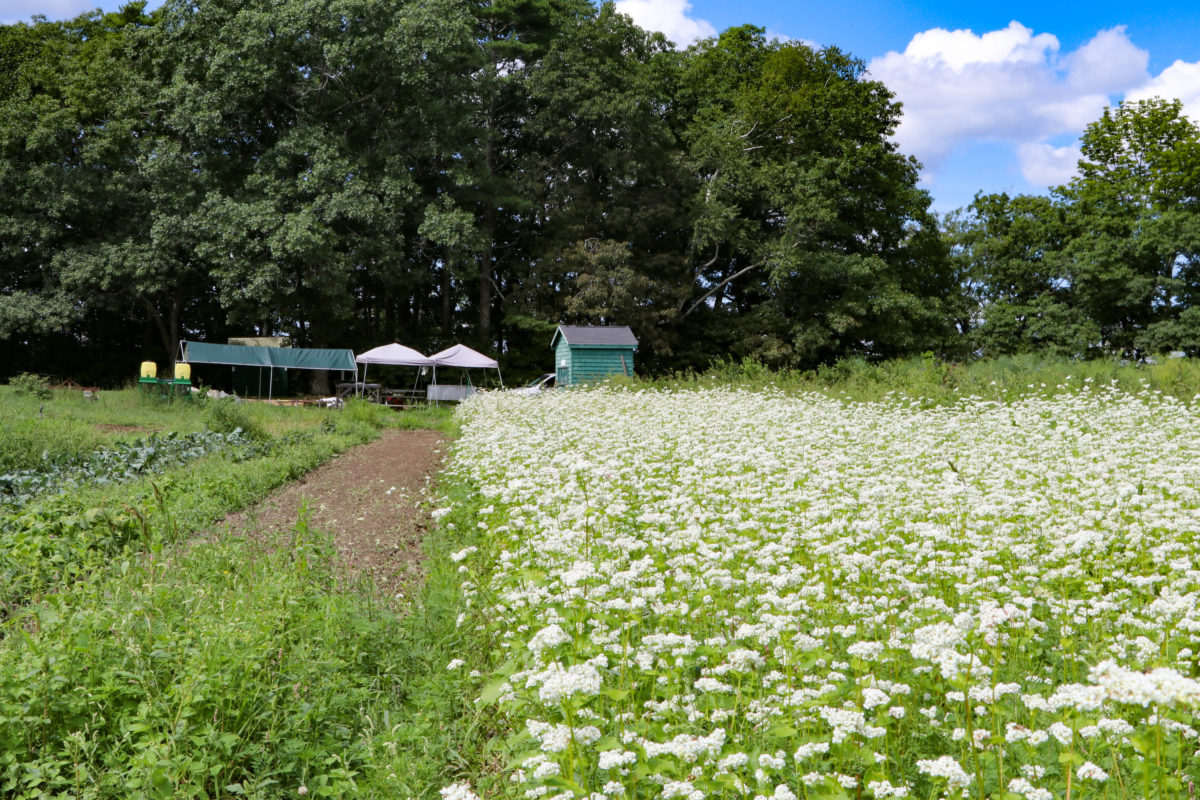Cover Crops: Rooted in the landscape at Wolfe’s Neck Center
Prioritizing healthy soils takes many forms at Wolfe’s Neck Center, but core to this ideology is the use of cover crops whenever possible. For our fruit and vegetable farmers, this is a no brainer and is at the root of what they do. One rule of thumb they have is that it’s always best to keep roots in ground at all times. When a production field is left as bare soil, it is less resilient to strong weather, pests, weeds, and other farmer cruxes.
Here’s how it generally plays out, as it is this September: After harvesting all of our long season, spring-planted crops as the cold weather approaches, all that’s left to plant are the short term crops such as radishes, lettuce, and scallions. These crops will be picked long into the fall and, afterwards, we’ll put down our winter cover crop. As is the case here, cover crops are planted in between cropping sessions, essentially whenever there is space in the field that’s not being occupied by fruits and vegetables.

Cover crops are determined for planting in specific areas based on the ecosystem services they provide and what benefit they will bring to the plot. In a given year, we’ll choose between oats, peas, buckwheat, daikon radish, clover, barley, or Sudan grass, to name a few, and they all offer varying blends of services. Aside from analyzing what the soil needs, price can often be a key factor in determining which cover crops to plant.
This season, the farmers have already begun to cover crop portions of our field, including a large buckwheat pollinator habitat and rows of oats and peas intended to improve our soil. Buckwheat germinates quickly and outcompetes weeds. It also has a short lifespan (45-50 days), which allows growers to work it into a cropping rotation quickly. And, as for a key reason our farmers planted it, buckwheat flowers 14-20 days before it begins to go seed, which attracts a large variety of pollinators and predatory insects that compete against pests.

Our farmers used a blend of oats and peas for one of the cover crop plots as a means of reaping benefits of both while minimizing costs. Oats are quick to germinate, but it’s most effective when mixed with a legume like peas to catch and store nitrogen present in the soil for the next crop. Peas also smother weeds, making it an effective organic/no-spray method of weed suppression.
Cover crops are effective until just before they are about to go to seed. If they get to this point, their seed disperses and they suddenly become a weed for the cash crop that will be grown subsequently! To prevent this, our farmers use a technique called crimping at the point when it begins to produce a seed. Crimpers are devices that roll or bend a cover crop to flatten it onto the ground and terminates growth. It’s a method for suppressing weeds in the understory of the crop. The debris is left to compost on the field. It breaks into an organic matter—or, green manure—whose nutrients naturally build the soil.

For a farmer training model that teaches the cruciality of regenerative agriculture for long-term, holistic environmental and human health, cover crops are a critical component. A cover crop is grown as a means of enriching, conditioning, and protecting the soil. Flowering cover crops also attract pollinators, beneficial and predatory insects, while keeping weeds suppressed. Cover crops minimize disturbances (like erosion) by holding the soil in place with deep roots when cash crops are not being grown. Our farmers perform soil tests every year and have found that the amount of organic matter has increased each year.
Building soil health is a long term process, and cover cropping is one part of it. Healthy soils are important because they create a “biome” rich in fungus, bacteria, and invertebrates that in turn grow more nutritious crops. Soils that have not been tilled have improved drainage and the ability to hold carbon into the ground, where it is beneficial to plant growth. When farmland is tilled, this carbon is released into the atmosphere, depleting soil structure and contributing to the excessive atmospheric carbon that directly correlates to climate change. By cover cropping, using low-till methods, planting perennial orchards, and training new farmers on a regenerative farming model, we are doing our part in showcasing how farming can be prioritized as an impactful solution to climate change threats and resilient to its implications.
← Back to Blog